How Much Solar Do I Need When Travelling Off The Grid?
— May 17, 2021 | 2 min read
Travelling the country and living off the grid brings a sense of freedom that’s hard to beat. Getting away from it all and seeing the amazing sights Australia has to offer is something many of us enjoy routinely, providing a chance to truly experience living away from the comforts of home.
That’s not to say, however, that life on the road needs to be without the essentials. There are several modern conveniences that make travelling in remote parts safer, simpler, and more comfortable. The electric fridge is a vital part of life off the grid, while the kettle, microwave, and toaster help minimise time spent cooking, giving us more time to explore and unwind.
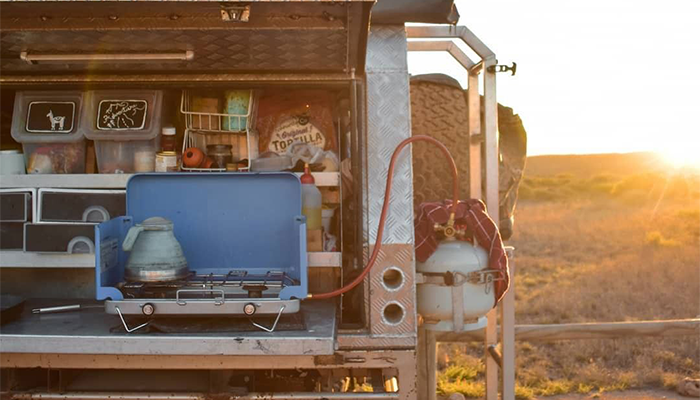
We also need to look our best from time to time, so plugging in the hair dryer or iron is important for those nights on the town. And let’s not forget the laptop, tablet, and mobile phone – critical tools in keeping us connected with loved ones back home.
So, with all of that in mind, how much solar do I need when travelling off the grid?
Understanding Watt-hours
What hours? No, Watt-hours. Figuring out how much solar you’ll need to live off the grid is all about knowing how much power you’ll need.
The most easily understood industry measurement for this purpose is the calculation of Watt-hours (Wh), simply multiplying how many Watts the items you expect to power will use by how many hours you expect to use them each day.
Watts x hours = Watt-hours (Wh)
It’s a relatively easy calculation to make. You can find the usage rate of each appliance in Watts on a placard on the appliance itself or in its owner’s manual.
Once you have the Wh figure for each item, add them all together to get your total Wh/day figure, like the example below:
(Fridge) 720Wh + (Kettle) 185Wh + (Work Lights) 80Wh + (Laptop) 138Wh = 1,123Wh/day
With this information in hand, you can now start to understand the type of solar system that best suits your needs.
Of course, the solar system includes enough battery capacity to meet all of your daily requirements and provide enough additional charge for unexpected usage or dull weather days. We recommend adding 20 per cent to your Wh/day figure.
1,123Wh/day + 20% = 1,348Wh/day
Now, of course, the sun doesn’t shine for 24 hours a day. So, we need to adjust the figure above to compensate for the sunlight you’ll actually receive across your solar array.
Depending on where you’re travelling, this could be as little as five or six hours a day, meaning you’ll need more solar panels and more battery capacity to provide power for the times you actually need to use it.
Wh/day ÷ sunlight hours = Solar Panel Watts required
(e.g., 1,348Wh/day ÷ 6 sunlight hours = 225 Solar Panel Watts)
So far, following our calculations above, we’ve determined that we need 225 Solar Panel Watts each day.
This will be enough to fully charge the batteries and accommodate the daily power consumption from the four items we listed, based on an average of six sunlight hours per day.
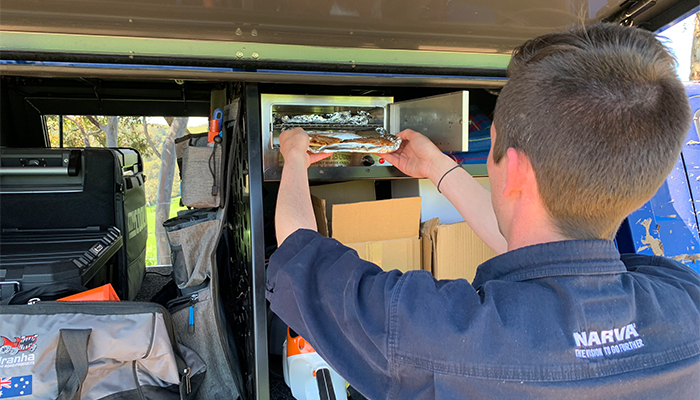
Blanket, fixed, folding or panels?
There are three main types of solar panels you might encounter: blanket (or soft-folding panels), portable (or hard-folding panels), and fixed panels.
Across the Projecta range, these are of monocrystalline (folding) and polycrystalline (fixed) construction, respectively.
The Projecta range offers various Wattage panels in each of the ranges; and depending on the application your setup requires, offers a solution for just about any scenario.
For a lot of us, travelling off the grid is a daily game of Tetris, and space is always at a premium.
If your vehicle configuration allows, fixed panels may be the way to go, freeing up space inside the cabin and charging continually from the roof top whether you’re on the go or not.
But rooftop panels do have their limitations. Laid flat, a fixed panel will produce as much as 38 per cent less power than one that is angled toward the sun.
This obviously means that more panels are required to produce the same amount of power, so be sure to work that into your calculation if affixing panels horizontally is your only option.
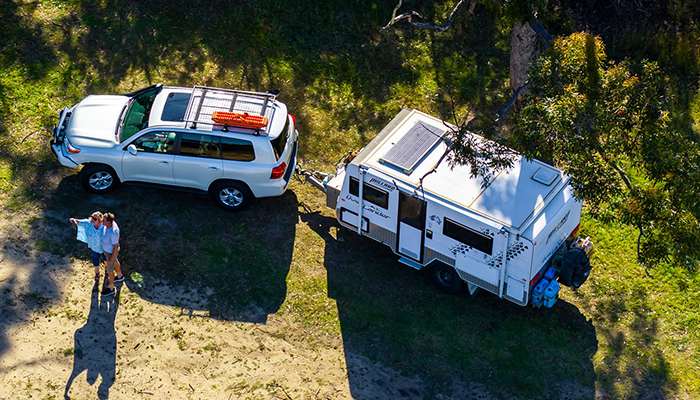
However, if you’re building a full-time setup, it’s worth remembering that fixed panels will provide a reliable base load to your battery. Projecta manufacturer a range of polycrystalline fixed solar panels in a variety of sizes, the 12-volt line-up offering 20, 40, 60, 80, 120, 135 and 160-watt outputs.
Folding panels tend to be bulkier than fixed panels but are hinged to allow storage in narrow confines.
Folding panels have the advantage that they can be easily setup to face the sun and moved to remain out of the shade. They’re also a terrific option to supplement the power supplied by fixed panels and are a more cost-effective alternative to solar blankets.
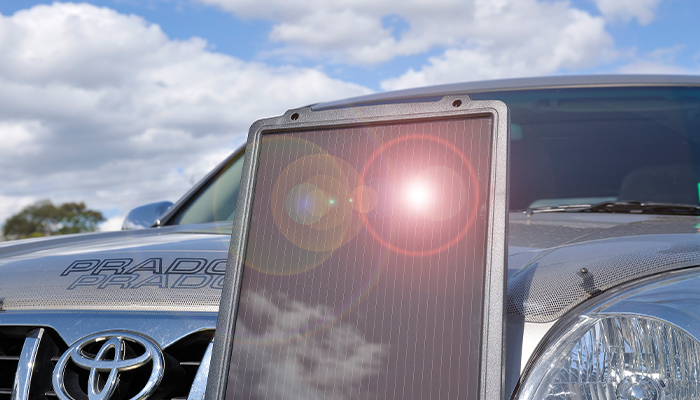
Projecta make 12-volt hard-folding solar panel kits with 120 or 160-watt outputs. Each utilises super-efficient monocrystalline technology and include a five-metre-long cable, battery clamps, support legs and a four-stage controller to ensure optimum battery maintenance.
Finally, we have solar blankets, and these present one major advantages over fixed and hard-folding panels: they take up far less space. Solar blankets are also perfect in low-light conditions, ideal for putting extra power back into your battery to avoid the dreaded ‘flat’.
Projecta soft-folding kits and COMPAC Series solar blankets fold up to an extremely compact size, making them easy to store.
The former is available in 12-volt format with 80, 120 or 180-watt outputs, while the COMPAC Series solar blankets arrive in 5-volt/10-watt or 5-volt/15-watt configuration and are perfect for the fast-charging of mobile devices or for adding additional charge to your fixed solar array.
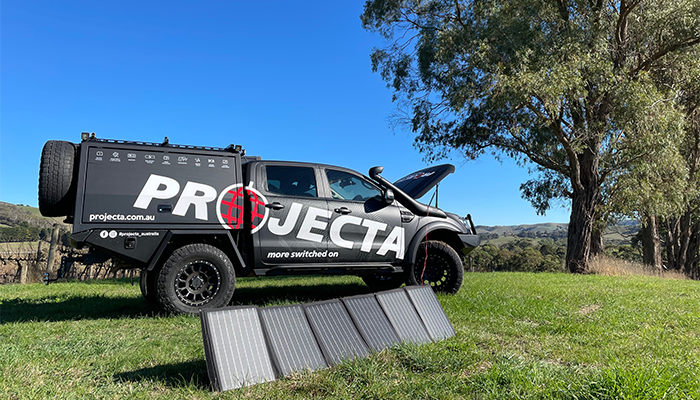
Learn even more about selecting the right solar panel for your setup here: Solar Panel Size
Solar panel controllers
Solar panel controllers regulate the power gathered from your solar array. Each of the controllers in the Projecta range can be left connected indefinitely to the battery, keeping it fully charged, monitoring its condition, and performing a process called ‘float’ charge to keep the battery in optimum condition, ultimately ensuring longer life.
Projecta make a range of 12 and 24-volt solar panel controllers for 8, 10, 15, 20, 30, 45 and 60-amp applications.
Learn more about the Projecta solar panel controller range here: Solar Panel Controllers
